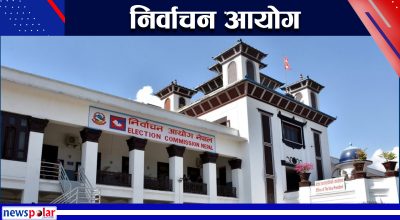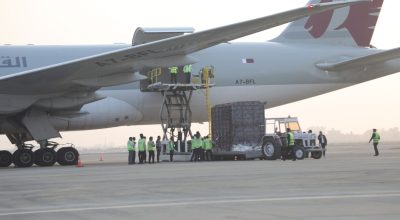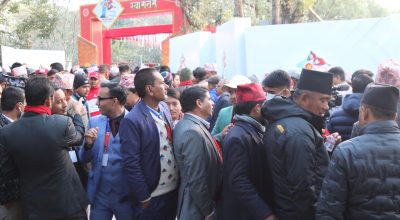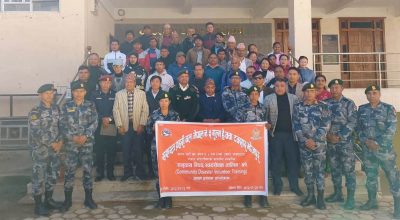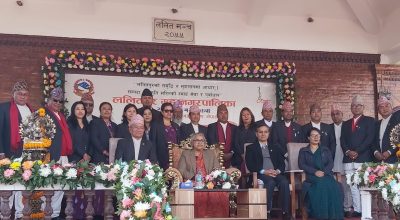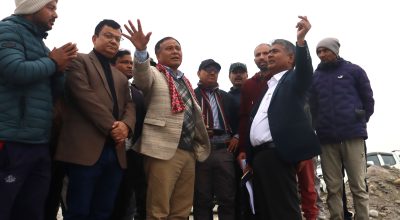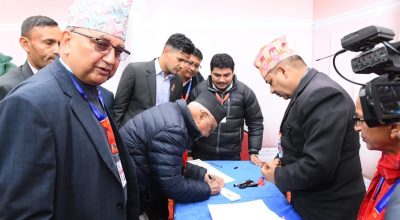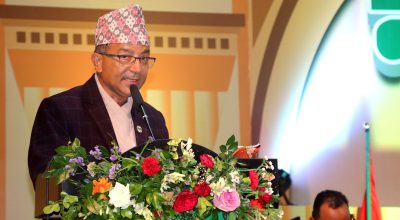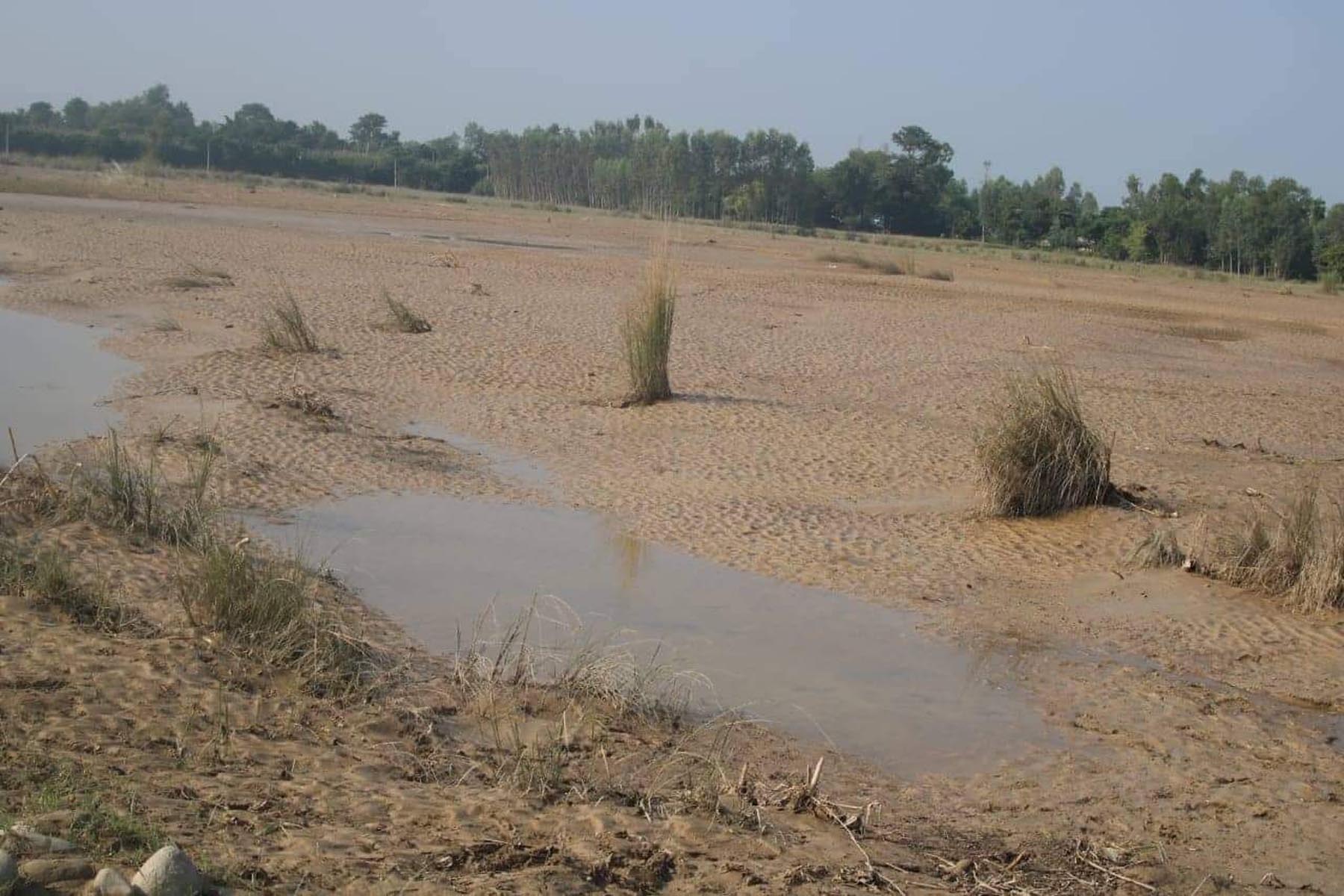
Durga Devkota
Dhangadhi, Oct 13: The general people in Kailali, who have been putting up with flooding each year, have become more aware of the Early Warning System (EWS) in the recent years, compared to previous years.
People living in settlements near the rivers and rivulets have been adopting disaster preparedness measures based on the EWS information.
People working in the disaster management sector say that the disaster preparedness is contributing to minimize the damage caused due to the flooding in Kailali district in recent years.
The disaster preparedness measures adopted by the people in Bhajani area in the district has helped prevent damages and loss of lives and property.
The Bhajani folks have now become more aware of the EWS and therefore they adopt preparedness in the face of floods.
Before this, they had to suffer much agony as a result of the disaster, as they were not quite aware of the EWS and could not adopt disaster preparedness.
This year, Bhajani area had to endure flooding four times. All the settlements were flooded, but there was no much damage, thanks to the disaster preparedness initiatives the locals adopted. More than 4,000 families were affected due to the flooding that occurred on September 22.
“Although their homes were inundated, most of the families managed to shift their foods, food supplies and their livestock to safe places, as they took precaution and preparedness measures, becoming aware of the impending disaster through EWS,” said Jaya Prasad Dhungana of Sonahaphant, Bhajanu-8.
According to him, people event lost their lives to flooding in the past as there was no EWS in place, but now everyone here have some knowledge of the EWS information.
“People take preparedness measures when they receive information through the EWS of arrival of rain; therefore, there is less damage.
Even if there is large scale flooding, only their homes and fields are damaged, as the people evacuate to safe places,” Dhungana said of how the EWS information is helping in disaster preparedness and prevention of damage.
Stating that people have started becoming aware of the EWS and they have started constructing houses in higher ground and adopting the necessary disaster preparedness, he said, adding that the local government alone cannot do much if people themselves are not aware.
Whenever there us large-scale flooding in their area, people have to live out on the roads and they are also aware on how to live in such conditions as well, Dhungana said.
Nirmala Karki of Bhajani, who is a farmer, agrees that the EWS information has helped them become better prepared for disasters.
“We look at the messages related to flood that we receive in our mobile, check the local municipality’s website and listen to the radio.
The community relies on this information. We have not yet forgotten that we had to lose three of our people to the floods some years back as we were not accustomed to the EWS.
Now-a-days, we evacuate to the Postal Highway as soon as we get information of flood risk through the EWS,” she shared about her experience.
Communities gradually becoming accustomed to EWS
Another Bhajani local, Padam Chaudhary also regularly checks for the EWS-related messages on his mobile and says it has helped the local community for disaster preparedness.
Ram Krishna Chaudhary, the EWS coordinator at Bangaun, Tikapur-8, says that the importance of EWS has been increasing in the downstream areas to save life and property from floods.
Mangali Tharu, also from Tikapur-8, said that although her community had to suffer a great deal of damage for lack of the EWS before, things have become a lot easier these days, thanks to the available EWS.
“The three-day and weekly information on weather forecasting have helped the local communities a great deal to remain safe from disasters,” she added.
Tikapur-7, Ward Chair Yagya Prasad Neupane said that although water level measurement stations have been set up at Mohana, Patharaiya and various places along the Karnali River, there is public complaint that not much information is received from these stations.
He called for addressing this complaint. “Various organisations used to bear the pay of the people employed to monitor the stations under the jurisdiction of the community and relay information.
There is no such support these days, which means there are no people to relay the information,” Ward Chair Neupane rued.
Nirmala Chaudhary, Chief of the Tikapur Municipality Disaster Management Section, said: “Ward Nos 6 and 7 of Tikapur Municipality were inundated by flood on July 7.
Because the community was aware on disaster preparedness, they informed the local emergency operation centre.
The municipality, police and locals together brought food stuff, household goods and other items from people’s homes and their cattle to safer place.”
According to her, the settlements were waterlogged and people could not go back to their homes for about three days but they could evacuate on time and protect their goods and valuables as the EWS information came to their rescue.
Chief of the Bhajani Municipality Disaster Management Section, Bishnu Neupane, also stressed on the need for the local governments to invest more in disaster preparedness and enhancing the EWS, as the local government can ill-afford to provide relief support to thousands of families given that the municipality has experienced heavy flooding four times in a year.
Sanjaya Shah, Chief of the Department of Hydrology and Meteorology, the Mahakali Basin Field Office at Attariya, said that works are underway for automation of the water level measurement and rainfall measurement stations.
As he said, the 31 hydrological measurement stations in the Sudurpaschim province were totally ‘manual’ before this and they have now been ‘automated’.
Eleven rainfall measurement stations and 10 water level measurement devices have been set up along the Mohana and Khutiya rivers.
But they are not in operation at present. Once these come into operation, there will be 42 water level measurement and 89 rainfall measurement stations in the province.
More than 40 rainfall measurement stations are automated. #rss #warning #disaster





